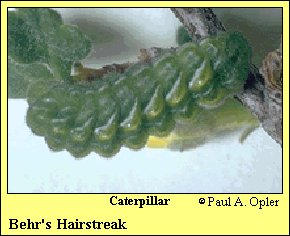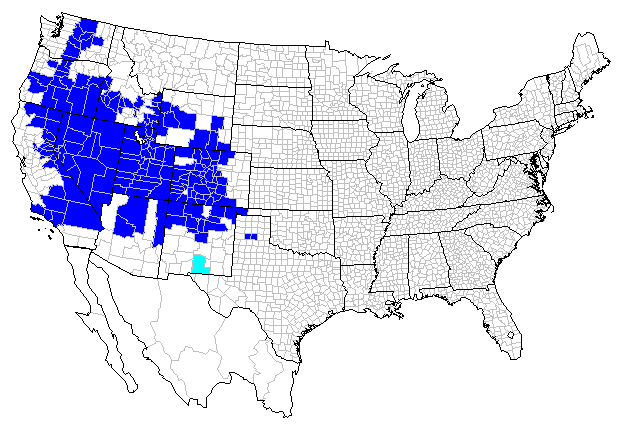 |
 

 |



Behr's Hairstreak (Satyrium behrii [W. H. Edwards])
Wing span: 1 - 1 1/4 inches (2.5 - 3.2 cm).
Identification: Tailless. Upperside orange with wide brown borders on forewing. Underside of male brown, female brownish-white; both with postmarginal and submarginal lines of irregular small black spots.
Life history: Males perch on shrubs to watch for receptive females. Eggs are laid singly on leaves or twigs of host plant; they hibernate and hatch the following spring. Caterpillars eat leaves.
Flight: One flight from June-July.
Caterpillar hosts: Antelope brush (Purshia species) and mountain- mahogany (Cercocarpus montanus) in the rose family (Rosaceae).
Adult food: Flower nectar.
Habitat: Sagebrush scrub, juniper-pinyon woodland, brushland, pine woodland, chaparral.
Range: Local within its range. Western Texas north and west through New Mexico, Arizona, and southern California to British Columbia.
Conservation: Not usually required.
The Nature Conservancy Global Rank: G5 - Demonstrably secure globally, though it may be quite rare in parts of its range, especially at the periphery.
Management needs: None reported.
References:
Scott, J. A. 1986. The butterflies of North America. Stanford University Press,
Stanford, Calif. 583 pages, 64 color plates.
Tilden, J. W. 1986. A field guide to western butterflies. Houghton-Mifflin Co.,
Boston, Mass. 370 pages, 23 color plates.
Author: Jane M. Struttmann

